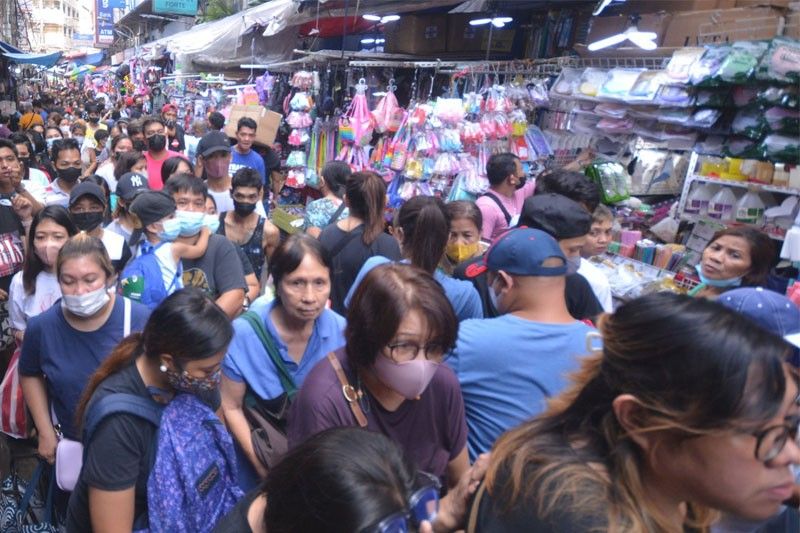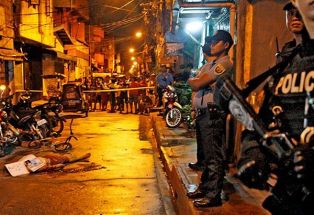NCR’s 7-day COVID-19 positivity rate rises to 11.1%

MANILA, Philippines — The seven-day COVID-19 positivity rate in the National Capital Region (NCR) rose from 7.5 percent to 11.1 percent, while increases were also seen in other areas in Luzon, according to the OCTA Research Group.
In a tweet, OCTA fellow Guido David yesterday said the positivity rate in NCR increased from 7.5 percent on Nov. 19 to 11.1 percent on Nov. 26.
“The positivity rates in Luzon as of Nov 26 vs. Nov 19. Rising positivity rates in NCR (from 7.5 percent to 11.1 percent), Cagayan, Ilocos Norte, Ilocos Sur, Kalinga, Pangasinan,” David said.
From Nov. 19-26, the positivity rate in areas in Luzon are: Benguet (from 24.7 percent to 27 percent); Bulacan (5.6 percent to 7.6 percent); Cagayan (14.4 percent to 18.2 percent); Ilocos Norte (4.7 percent to 7.8 percent); Ilocos Sur (21.7 percent to 32.9 percent); Kalinga (15.9 percent to 23.7 percent); La Union (20.7 percent to 22 percent) and Pangasinan (13.2 percent to 16.5 percent).
The positivity rates in the following areas were down: Albay, Bataan, Camarines Sur, Cavite, Isabela, Laguna, Nueva Ecija, Pampanga, Quezon, Rizal, Tarlac and Zambales.
The DOH on Sunday recorded 1,326 new COVID-19 cases, increasing the total nationwide caseload to 4,033,682.
Mostly mild
With the recent detection of the COVID-19 Omicron subvariant BQ.1 in the country, infectious disease expert Dr. Edsel Salvaña said cases could go up, but these will be mostly mild infections, “as long as there is intensified vaccination uptake including those receiving booster shots.”
At the Laging Handa public briefing yesterday, Salvaña said, “I think that if ever this variant of concern causes a rise in COVID infections, it might not affect a large number of people and will not reach more than 5,000 cases.”
“I would say that most of these will consist only of mild cases that would not need hospitalization,” Salvaña said, adding that he observed that despite the policy of the optional wearing of face masks indoors and outdoors now in effect, many are still wearing face masks and this is contributing to better protection of the population.
Salvaña described BQ.1 as related to BA.5 with an increased immune escape from vaccines characteristic.
“However, there is no evidence that this variant causes severe infections. This means we know that the virus is mutating and that it is important to protect ourselves by receiving boosters and continue the wearing of face masks, especially by the vulnerable population,” the health expert said.
“What is also important right now as we are headed toward endemicity is that we need to keep watch of our health care utilization rate which still remains low. At the end of the day, the most important effect of variants that should be noted is if it could become an additional burden to our health care system,” said Salvaña, a member of the Department of Health (DOH) Technical Advisory Group.
At the same time, Salvaña stressed that the current vaccines remain effective in preventing severe disease.
“According to the World Health Organization, we are still getting protection from our existing vaccines or the monovalent vaccines in preventing severe infections.
As to this new variant under Omicron, infections may develop but just like what I’ve said, these are going to be mild cases only,” he explained.
“As long as people are vaccinated and they get boosted and when the bivalent vaccines become available here, these will help decrease further the risk of infection. We can get through this new variant of concern as long as we continue to take care of ourselves,” said Salvaña.
The DOH earlier reported that 14 cases of BQ.1 have been detected in the Philippines.
BQ.1 – considered a BA.5 sub-lineage – has been tagged as a variant of interest by the WHO.
“It is said to be more transmissible, highly immunoevasive compared to other Omicron subvariants,” said DOH officer-in-charge Maria Rosario Vergeire. – Rhodina Villanueva
- Latest
- Trending



























